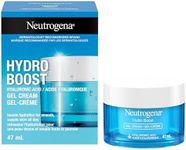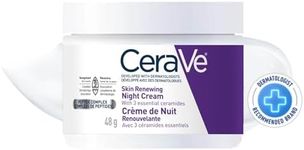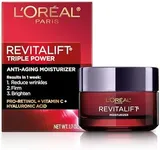Buying Guide for the Best Face Moisturizers
Choosing the right face moisturizer is all about understanding your skin’s unique needs and how different products can address them. Moisturizers help keep your skin hydrated, protect it from environmental stressors, and can even target specific concerns like oiliness, dryness, or sensitivity. The best approach is to know your skin type and any particular issues you want to address, then look for a moisturizer that matches those needs. Always check the ingredient list and consider how the product feels on your skin, as comfort and compatibility are key for daily use.Skin Type CompatibilitySkin type compatibility refers to how well a moisturizer matches your skin’s natural characteristics, such as being oily, dry, combination, or sensitive. This is important because using a product not suited to your skin type can lead to breakouts, irritation, or insufficient hydration. Moisturizers for oily skin are usually lightweight and oil-free, while those for dry skin are richer and more emollient. If you have combination skin, look for balanced formulas, and for sensitive skin, choose products with minimal fragrance and gentle ingredients. To pick the right one, start by identifying your skin type and then select a moisturizer formulated specifically for it.
Texture and ConsistencyTexture and consistency describe how thick or light a moisturizer feels and spreads on your skin. This matters because a heavy cream might feel greasy on oily skin, while a light gel may not be enough for very dry skin. Moisturizers come in gels, lotions, creams, and balms. Gels are best for oily or acne-prone skin, lotions suit normal to combination skin, creams are ideal for dry skin, and balms work for very dry or compromised skin. Choose a texture that feels comfortable and absorbs well on your skin, considering how your skin feels throughout the day.
IngredientsIngredients are the active and supporting substances in a moisturizer that provide hydration, nourishment, and protection. This is crucial because certain ingredients can target specific skin concerns or trigger reactions. Look for hydrating ingredients like hyaluronic acid or glycerin for moisture, ceramides for barrier support, and antioxidants for protection. If you have sensitive skin, avoid fragrances and harsh chemicals. To pick the right one, focus on ingredients that address your main skin concerns and avoid those that have caused you issues in the past.
SPF ProtectionSPF protection means the moisturizer includes sun protection factor, which helps shield your skin from harmful UV rays. This is important because daily sun exposure can lead to premature aging and skin damage. Moisturizers with SPF are convenient for daytime use, especially if you spend time outdoors. SPF values typically range from 15 to 50; higher numbers offer more protection. If you’re often outside, choose a higher SPF, but if you’re mostly indoors, a lower SPF may suffice. Always remember, SPF in moisturizer is for daily incidental exposure, not for extended sunbathing.
FragranceFragrance refers to added scents in a moisturizer, which can make the product more pleasant to use but may also cause irritation, especially for sensitive skin. Some people enjoy a light scent, while others prefer fragrance-free options to avoid potential reactions. If you have sensitive or allergy-prone skin, it’s best to choose fragrance-free products. If you enjoy scented products and haven’t had issues before, a lightly fragranced moisturizer can be a nice touch. Your personal preference and skin sensitivity should guide your choice here.
Non-Comedogenic PropertiesNon-comedogenic means the moisturizer is formulated not to clog pores, which is important for people prone to acne or breakouts. If you have oily or acne-prone skin, choosing a non-comedogenic moisturizer can help prevent new blemishes. These products are usually labeled as such and tend to be lighter in texture. If you rarely get breakouts, this may be less of a concern, but for those with acne-prone skin, it’s a key feature to look for.
















